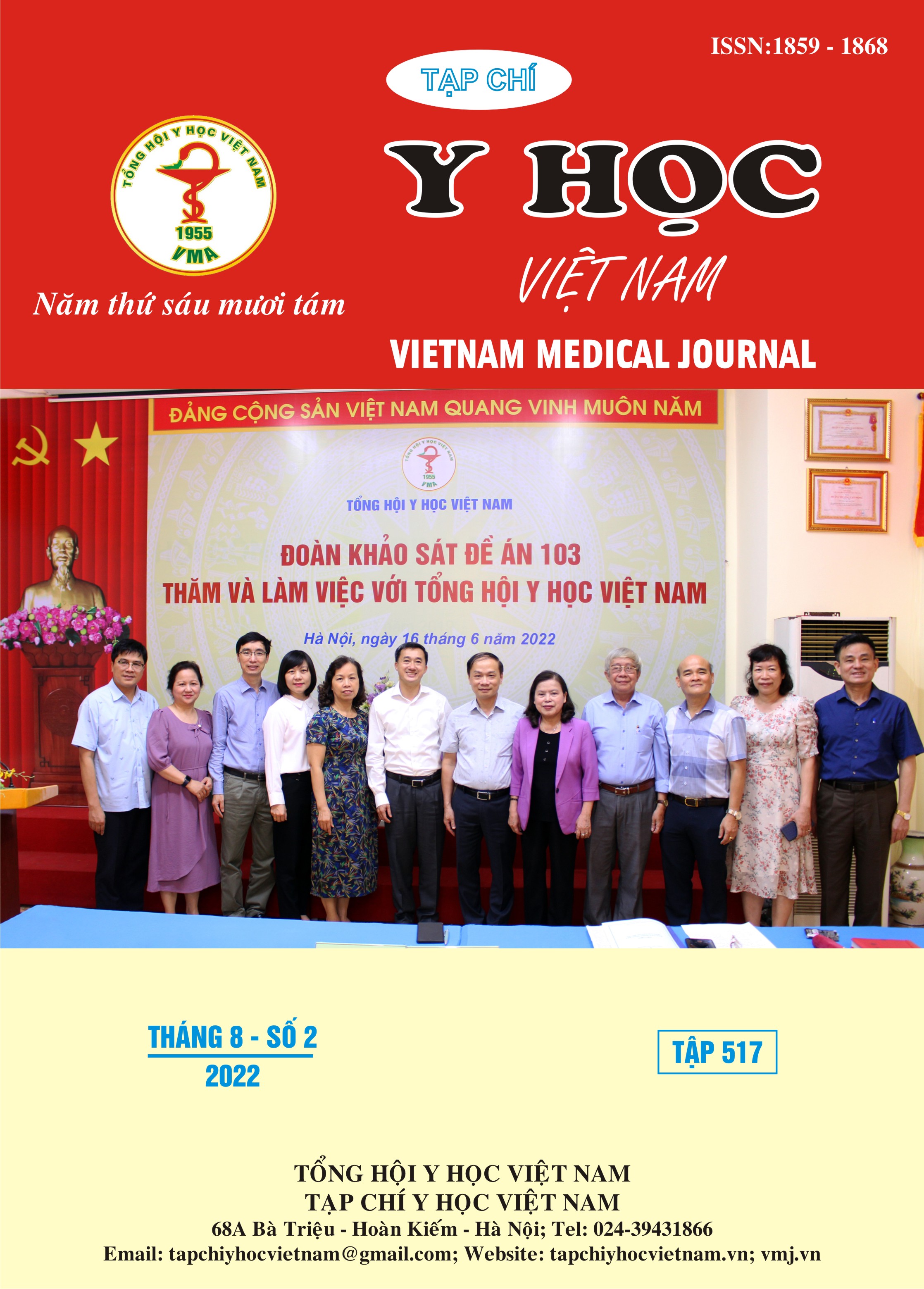CLINICAL, SUBCLINICAL CHARACTERISTICS AND TREATMENT RESULTS OF KAWASAKI DISEASE IN HAI PHONG CHILDREN'S HOSPITAL
Main Article Content
Abstract
Kawasaki disease is a syndrome of unknown cause that results in a fever and mainly affects children under 5 years of age that can cause severe damage to the coronary artery if left undetected and lack of early treatment. Objectifs: We aimed to perform this study in order to contribute to the amelioration of an early diagnosis, intime treatment and reduction of the complications of this disease. Materials and methods: We conducted a retrospective study of 48 Kawasaki disease cases diagnosed at Hai Phong Children's Hospital from January 2016 to March 2020 and draw the following conclusion. Results: Most children with Kawasaki disease were at the age of 6 - 24 months, the rate of male/female was 1.27/1. All of patients had fever while other symptoms were found in the majority of patients. Most symptoms appeared within the first week of illness. There were 26/48 Kawasaki patients diagnosed who had been treated at the Hai Phong Children's Hospital. 92.3% of patients were treated and responded to IVIG right from the first dose, 7.7% of cases were drug resistant, requiring the 2nd IVIG dose. There was no death case in our study. Most hematological and biochemical parameters quickly returned to normal after IVIG treatment while CRP and VSS greatly increased and returned to normal more slowly. Conclusion: Our research showed that there is still a need for improvement in early diagnosis as still 35.5% of cases had a differrent initial diagnosis from Kawasaki, and post-treatment cardiovascular injury monitoring is essential.
Article Details
Keywords
Kawasaki, coronary artery, IVIG
References
2. Hào, T. K., Sơn, N. H., & Anh, N. T. H. (2019). Bệnh Kawasaki ở trẻ em tại Trung tâm nhi khoa BV TW Huế, nghiên cứu hồi cứu 10 năm ( 2009-2019). Tạp chí Y học Việt Nam, tháng 12(1+2(485),156 - 160.
3. Hồng, N. T. T., & Hà, H. S. (2005). Nghiên cứu đặc điểm lâm sàng và cận lâm sàng của bệnh Kawasaki ở trẻ em tại bệnh viện Nhi trung ương. (Luận văn thạc sỹ Y học), Đại học Y Hà Nội.
4. Huang, Y.-H., & Kuo, H.-C. (2017). Anemia in Kawasaki Disease: Hepcidin as a Potential Biomarker. International journal of molecular sciences, 18(4), 820. doi: 10.3390/ijms18040820
5. Newburger, J. W., Takahashi, M., Gerber, M. A., Gewitz, M. H., Tani, L. Y., Burns, J. C., . . . Taubert, K. A. (2004). Diagnosis, treatment, and long-term management of Kawasaki disease: a statement for health professionals from the Committee on Rheumatic Fever, Endocarditis and Kawasaki Disease, Council on Cardiovascular Disease in the Young, American Heart Association. Circulation, 110(17), 2747-2771. doi: 10.1161/01.cir.0000145143.19711.78
6. Park, H. M., Lee, D. W., Hyun, M. C., & Lee, S. B. (2013). Predictors of nonresponse to intravenous immunoglobulin therapy in Kawasaki disease. Korean journal of pediatrics, 56(2), 75-79. doi: 10.3345/kjp.2013.56.2.75
7. Shulman, S. T. (2017). Intravenous Immunoglobulin for the Treatment of Kawasaki Disease. Pediatr Ann, 46(1), e25-e28. doi: 10.3928/19382359-20161212-01
8. Singhal, M., Gupta, P., Singh, S., & Khandelwal, N. (2017). Computed tomography coronary angiography is the way forward for evaluation of children with Kawasaki disease. Global cardiology science & practice, 2017(3), e201728-e201728. doi: 10.21542/gcsp.2017.28


